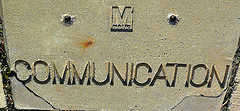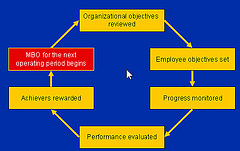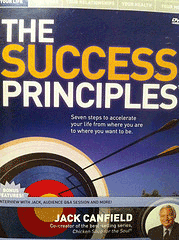Browse by Tag
- "Real" Innovation (2)
- Alignment (6)
- Business Innovation (9)
- Business Plan (2)
- Business Plans (1)
- Creativity (24)
- Critical Success Factors (4)
- Entrepreneurship (9)
- Global Competiveness (4)
- Human Side (11)
- India (1)
- Innovation (4)
- Innovation Consulting (18)
- Innovation Killers (3)
- Innovation Management (18)
- Innovation Tools (17)
- Innovation Training (24)
- Innovations (7)
- Inventions (16)
- IT Innovation (1)
- Leaders (5)
- Leadership (20)
- Leadership Development (13)
- Organizational Leadership (2)
- Organizational Strategy (20)
- Personal Values (6)
- Prediction (5)
- Strategic Innovation (38)
- strategic planning process (4)
- Strategy (3)
- Training (1)
- Vision (5)
- Weekly Dose (8)
Posts by Month
- 2014
- 2013
- 2012
- 2011
- 2010
- 2009
- 2008
- 2006
3 Books Full of Cool Innovation Tools
Every organization needs a basket of tools and methods to help find innovative ideas and solutions. Give access to the right tools to the right people based on the nature of their jobs and the types of challenges that needs to be solved. Surround them with proper innovation management processes, and the tools will help generate a culture of innovation and new profits. We are happy to share three of our favorite books on innovation tools.

The Takeaway
Innovation is an ever-evolving discipline. Many practitioners and academics have invented and popularized many tools to help you accelerate your innovation efforts.
Over to you. Please comment below.
- What other books would you add to the recommended reading list?
- What is your favorite innovation tool?
- In what area of innovation would you like to see new tools created?
6 Components to Building Innovation Momentum
Our research and experience has led us to identify six components of building momentum and change to help you accelerate your innovation journey and lift off.

- Develop your innovation story. Develop a compelling case for innovation, what innovation is, and why the company is pursuing the innovation journey now. Include how it will benefit everyone.
- Evoke change leadership. No one likes change. During the uncertainties of a change process, people don't hang onto concepts, they hang onto people. Create a sense of urgency and build awareness and excitement about innovation for your key sponsors and change agents.
- Identify innovation leaders and best talent. Identify the natural intrapreneurs, innovation champions, and innovation igniters along with your key innovation leaders, advisors, and mentors. This talent pool will help you build the required innovation capability.
- Communicate, communicate, and communicate. Go for fast and small wins and tell everyone about it. Collect momentum data showing progress, and implement and integrate a solid public relations strategy using any and all resources at your disposal.
- Build awareness--educate everyone. In many ways an innovation change initiative begins and ends with education. It is the primary method of advancing and improving organizational knowledge and acceleration for desired changes in the hearts and minds of everyone involved.
- Protect the momentum. Vigilantly protect innovation principles. Many will want to go back to status quo and forget the agreements, processes, and principles in the playbook. Every small win is a huge step toward the future and part of the foundation-building process. Protect the foundation.
The Takeaway
Innovation momentum is created, not decreed by senior management. Use your momentum to establish your innovation objectives and goal.
Over to you. Please comment below.
- What steps would you add to the list?
- How do you motivate your innovators?
- Please share an anecdote about innovation momentum.
5 Important Innovation Change Questions
In our experience at the DeSai Group, when dealing with innovation as a major change initiative, employees seek answers to these five questions:
- What is happening with the innovation program?
- Why are we pursuing innovation as a major change?
- When is it going to happen?
- How will I be impacted during the rollout and after implementation?
- Where can I go with more questions, issues, and concerns related to the innovation program in my area?
What if we do not communicate to staff?
If these questions are not answered, you are leaving it to chance for employees to create their own interpretations, leading to possible negative consequences and waste of your valuable resources.

Communication Plan Template
Your high-level communication plan may include these points:
- Develop answers to the five questions. Then make sure the questions are addressed in every innovation initiative communication document, meeting, and webcast.
- Develop a one-minute message--your elevator pitch about the innovation program. It should describe the business case and vision for the future.
- Demand consistent dialog at all levels, especially middle management.
- Use multiple media to teach and tell--remove uncertainties and doubt from day 1.
- Clearly identify the objective of each communication: awareness building, skill development, network development, employee engagement, and so on.
- Check often for alignment of process objectives and productivity for the parties in the communication activity.
- Be open to examine and test for what people hear.
- Actively respond to feedback and make adjustments to the plan as required.
Communication, Communication, Communication
Don't underestimate the need to repeat the messages even when you know everyone has heard them time and again. Even with your best efforts, there are always many who will not understand the importance of the innovation change initiative.
There have been stories where after six months of implementation activities, senior executives have publicly asked, "Why are we doing all this innovation stuff?". Although this raised a few eyebrows, the question was taken seriously and led to rather thorough discussions of the whys that had not surfaced before.
The Takeaway
Innovation is about approaching products and processes in a different way. The communications surrounding the innovation effort require different methods as well.
Over to you. Please comment below.
- How do you disseminate information about your innovation change program?
- What else would you add to the communications plan template?
- What other questions do you find that employees tend to ask?
Strategic Acquisitions - Telecommunications Case Study
Everything is connected to everything. Everything is moving from large, to small, to micro, to nano. That means computing power in the palm of our hands and soon in our blood cells.
In order to turn data into information and knowledge, we need telecommunications. As an example, one of the largest growing fields is the convergence of 2-D data and entertainment. The convergence requires much larger and more efficient communication pipelines. Not everyone needs the same pipeline of services. Therefore, the Telecommunications industry must respond with customized communication services for any rich-media object. That means, for anyone in the world, at anytime, all the time, in any direction.

Client Situation
Let's take a look at a US Based, Telecommunications company with 9,000 employees, operating in 34 states plus one international operation.
They sought DeSai's help to develop new service offerings. Organic growth was their focus although they were open to acquisitions that would bring capabilities the company sought for wireless communications. The company asked DeSai to validate the targets before it spent hundreds of millions of dollars on the acquisitions.
DeSai Approach
The DeSai team dug deep into what jobs customers were really trying to get done in the target market by conducting interviews, implementing surveys and performing observational research.
The work resulted in the conclusion that customers were seeking to accomplish a set of jobs involving much different performance dimensions than what the client had originally envisioned.
DeSai Recommendation
DeSai recommended acquiring the capabilities to address the jobs from one of several struggling (and inexpensive) firms, rather than the high-priced acquisition target the firm was considering. Why? Because of the different capabilities identified during the vetting process.
Results Are The Measure of Innovation Success
How did applying the DeSai Body of Knowledge impact the company?
- DeSai's recommendation saved the telecom client millions of dollars in acquisition costs while showing the company an inexpensive route to acquire the capabilities it really needed to address the right customer jobs-to-be-done.
- Client achieved 22% top-line growth in first three years.
- 15% net contribution to the bottom line during the first three years resulting from the innovation program/process.
The Takeaway
Change your innovation culture to allow validation of key assumptions before committing large amounts of resources to a project.
Your Turn. Please comment below.
- What is your system of checks and balances for vetting possible acquisitions?
- How is convergence impacting your business opportunities?
- Do you prefer organic growth or acquisitions to increase the size of your business?
How to Define Innovation Objectives and Innovation Goal
To help facilitate a strong leadership conversation about innovation objectives and innovation goals, here are some examples of why you might choose to enable an innovation engine for your organization:
- To differentiate your organization in the marketplace
- To build customer loyalty
- To identify savings potential
- To achieve revenue potential
- To accelerate exploitation of new business ideas worthy of pursuing
- To a build climate and culture of innovation as per the organization's innovation mission
- To become a leading innovation brand for products and services in the markets served and new markets you may serve
- To improve and expand current products and services
- To access new technologies
- To access new markets
- To identify market trends
- To improve product quality and associated core processes
- To improve employee attraction, engagement, and retention
- To develop new competencies

Defining the Innovation Goal
The innovation goal should be visionary and exciting. It should be something that has not seen before, measurable at least once per year (eventually more often), customer focused, and ultimately delivering value (top line, mid line and bottom line).
Following are some examples of innovation goals:
- Increase the product pipeline from x to y, to grow the top line by 5% better than your sector's GDP.
- Annually achieve 25% additional margin from new customer-driven services.
- Increase the top line every three years by 25%.
- Double the top line and bottom line every three years.
- Achieve 25% of the top line from new services created within the past 24 months.
- Develop new customer-driven products from the top ten customers that will increase net margins by 5% every year.
- Build a new S-Curve: Invent a completely new business with a new category of offerings.
- Improve customer acquisition ratio by 15% every year for the next three years.
- Achieve a customer satisfaction index (CSAT) (or some other best practices method such as net promoter score (NPS) score of 6.0 out of 7.0 (85% or better).
- Achieve 25% net profit from 3 new businesses and 25 new current product enhancements in the next five years.
- 1% profit before income tax (PBIT) above the current PBIT targets.
- Top customers rate us as most innovative in markets and categories we serve.
- 2x/3y: Grow 2x every three years, both top line and bottom line.
- 3/30/3: Within three years achieve a rate of 30% new revenue from products/services introduced in last three years.
- 20/20: 20% of new business (top line) should come from 20% of new customers every year.
- 10/20/30: Ten new offerings that yield 20% growth in revenue and 30% growth in profitability.
- 50% of all products should be engineered or should include technologies from outside the firm by 2020.
These are good examples of innovation goals to consider. Use the list to engage senior leaders in dialog, debate, and consensus. Then, define innovation goals for your company and for each business unit.
If your innovation initiative is for the entire enterprise, one goal should be directly linked to the business strategy.
If you are rolling out innovation only in your own business unit or information technology department, the goal should be aligned to the area's business or operational strategy.
Whatever you choose as your innovation goal, it should be fixed for a minimum of three years. At the end of three years, you can always enhance it or pick an alternative.
The Takeaway
To communicate the innovation agenda to your organization you must first clearly define the innovation strategy, objectives and goals.
Over to you. Please comment below.
- How do you plan to motivate your company's employees to generate innovative ideas and products?
- What is your goal for company innovations in the next 12 months?
- What other items would you add to the above lists?
22 Principles of Innovation
Based on the last 25 years of working with local and global firms, The DeSai Group we has identified a22 Principles of Innovation. We have divided them into three categories: Organizational Success Principles, Individual and Team Success Principles and Leadership Success Principles.
When embraced, these principles create a significant difference when searching for innovations or venturing for new businesses. These principles are industry agnostic. Based on your industry, company culture, and business context, some may have more importance than others. They are all crucial in a great program design. You will need to uphold these as truths and make sure they take deep roots from day 1.

Organizational Success Principles
1. Seek innovation to alter or identify new business models. Due to the abundant number of convergences in products and industries, there is more white space today (in every sector) than ever before. Old business models are dying fast. Challenge your current business model, and perform acts of creative destruction. Work from the future back.
2. Listen for 360-degree voices. Your customers and partners are communicating their unmet needs faster and through a variety of media. Learn to listen faster. The voice of the customer alone is no longer enough. You must empathize with customers and gain new insights for their emerging and unmet needs.
3. Develop an innovation charter that defines innovation for your business. Tell everyone why it is important and what is expected of each individual at all levels as behaviors of innovation. Allow everyone to see themselves in your innovation vision.
4. Focus on developing microclimates for innovation, not the culture of innovation. This means you must find ways to make teams innovative. As more teams become innovative, culture will take care of itself.
5. Integrate innovation behaviors into your human resources performance management process.
6. C-suite and senior leaders should role-model innovation behaviors expected of others.
7. Provide basic innovation education to as many people as possible, and provide extended training to help build intrapreneurs. A good target ratio is 1% to 2% (develop 50 intrapreneurs if you have 5,000 non-factory employees).
8. Focus on fast experiments. Develop 90-day experiment plans for ideas that come from teams across the organization. Some of these ideas will surely drive powerful outcomes for your customers.
9. Define stretch challenges with a vivid vision of a future that is believable. Bigger challenges bring the best innovators forward. Real intrapreneurs are those who need stretch challenges and the freedom to test their wacky ideas-that is their currency. Liberate them to fail fast and discover ways to serve your customers. Give them candid feedback and recognize them quickly, no matter what the outcome for an experiment or a pilot. When they produce results, reward them handsomely.
10. In the beginning, provide access to off-budget funds for those who can work on challenging problems and produce fresh new solutions for growth.
11. Manage the idea bank closely-the bigger the pipeline (quantity and quality), the better the future.
Individual and Team Success Principles
12. Promote cross-functional volunteerism. Research shows that the majority of your employees bring only a portion of themselves to work. This means there is unharvested organizational potential waiting to be leashed. Allow anyone to form cross-functional teams for their great ideas. Diversity of thought is the catalyst for ideas. What any one person sees is only apart of what needs to be seen.
13. Teach people how to make what is invisible visible. No one person can see the future as clearly as a team of intrapreneurs can. Humans can see only through a lens of their past experiences. This means they never see a full reality of a situation. This thought can be humbling and, at the same time, very energizing for your best talent.
14. Learn to ask new questions before generating new ideas. Most organizations are solving the wrong problems in today's fast-paced world.
15. Prototype fast-think design on day 1. Always promote action over analysis. Sitting in the corner office idealizing issues and solutions is less effective than two people role-playing the situation for new insights.
16. Diverge then converge. Then do it again. Then do it once more. Three cycles will improve the clarity of an idea as it moves along the innovation pipeline. The very best ideas will survive.
17. Greenhouse ideas. At the very early stages, ideas must be protected just like a seed has to be protected for a plant to grow. Never dismiss an idea. Put them all in a greenhouse and protect them so they don't get shot down. Keep playing with them. It might take a few weeks or months before they are ready to be shared.
Leadership Success Principles
18. Show everyone how to derisk the future. Taking no risk can lead to stagnation. Not taking enough risk can create commoditization and price wars. Taking just enough risk at the right time can lead to market differentiation; that is called derisking the future.
19. Create healthy discontent. Provide stretch challenges and demand breakthrough solutions-once in a while. Most work is incremental. Your best innovators get bored easily. Often they are most sought after for all incremental challenges. Manage their intellectual capital between easy and complex assignments. This will keep them engaged and at peak levels of performance.
20. Communicate how innovation decisions will be made. Create an environment of transparency for idea generation, evaluation protocol, funding and experimentation.
21. Implement a reward and recognition policy that encourages proper behaviors for all, especially middle management.
22. Exhibit personal passion for innovative thinking and creativity.
The Takeaway
Innovation is a large opportunity in all organizations. However, it requires persistence, a plan and engaged employees to succeed.
Your turn. Please comment below.
1. What other innovation principles would you add to the list?
2. Which category do you feel is more important than the other two categories?
3. Do you find these principles to be industry agnostic?
6 Creativity and Innovation Books for Your Office
In my experience, all ideas come from an emotion of creativity. Many ideas are easy to find. However, the breakthrough ideas need staff that is challenged to solve the greatest problems Books in this category will help you identify the problem space as well as solution space by tapping into the hearts and minds of your people.

|
Managing Creativity and Innovation (Harvard Business Essentials) Packed with practical information designed for business readers and managers at all levels, this essential volume offers insights on managing creativity in groups, developing creative conflict, and using technology to help foster innovation. |

|
Think Better: An Innovator's Guide to Productive Thinking by TimHurson There are thousands of books about thinking. But there are very few books that provide clear how-to information that can actually help you think better. Think Better is about Productive Thinking - why it's important, how it works, and how to use it at work, at home, and at play. Productive Thinking is a game changer - a practical, easy-to-learn, repeatable process that helps people understand more clearly, think more creatively, and plan more effectively. It's based on the thinking strategies that people we celebrate for their creativity have been using for centuries. Tim Hurson brings Productive Thinking out of the closet and presents it in a way that makes it easy for anyone to grasp and use - so you can think better, work better, and do better in every aspect of your life. Think Better demonstrates how you can start with an intractable technical problem, an unmet consumer need, or a gaping chasm in your business strategy and, by following a clearly defined, practical thinking process, arrive at a robust, innovative solution. Manycompanies use the Productive Thinking model to generate fresh solutions for tough business problems, and many individuals rely on it to solve pressing personal problems. |

|
Creativity and Innovation in Organizational Teams stemmed from a conference held at the Kellogg School of Management in June 2003 covering creativity and innovation in groups and organizations. Each chapter of the book is written by an expert and covers original theory about creative processes in organizations. The organization of the text reflects a longstanding notion that creativity in the world of work is a joint outcome of three interdependent forces--individual thinking, group processes, and organizational environment.
|

|
The author of the bestselling The Art of Innovation reveals the strategies IDEO, the world-famous design firm, uses to foster innovative thinking throughout an organization and overcome the naysayers who stifle creativity. |

|
Leadership for Innovation: How to Organize Team Creativity and Harvest Ideas by John Eric Adair New ideas and new ways of doing things are one of the main ingredients in sustained business success, but how does one create the right conditions for innovation?
|

|
CATS: The Nine Lives of Innovation by Stephen C. Lundin It's time to let the CATS out of the bag . . . Curiosity might have killed the proverbial cat, but without it very real achievements would never occur. With this book as your guide, you'll learn how to spark your innate curiosity, pounce on problems in ways you never imagined, and enjoy greater success and satisfaction at work-and in your personal life. Playful, profound, and positively upbeat, CATS provides what you need to tap into your power of innovation-and then unleash it in every member of your organization. While most business thinkers view this challenge from the top down, Stephen Lundin sees the subject from a CAT's-eye view, explaining how to get every employee--no matter what level--to think and act in innovative ways. Inside, he examines the four challenges to innovation and offers practical measures aimed at conquering them. |
The Takeaway
Challenge your staff to think creatively about customer needs in new and unique ways.
Your Turn. Please comment below.
- What creativity and innovation books would you add to the list?
- Which of the books on the list did you enjoy the most?
- If only one book could be written on Creativity and Innovation what should its focus be?
INNOVATION IN 37 TWEETS
Innovation is an often written about topic. Many books and articles have been created including one of our favorites Innovation Engine written by DeSai Group co-founder Jatin Desai. We are all pulled in many directions each day. We can find it hard to spend the time reading worthwhile articles and books. Therefore, in the age of Twitter we bring you Innovation in 37 Tweets. Innovation thoughts expressed in 140 characters or less.
QUESTIONS YOU SHOULD ASK YOURSELF
- Are you relying on performance engine (short-tem growth) or using innovation engine for long-term growth?
- Do you have a solid business sponsor for the game of innovation in your organization?
- How different is your business model and its value proposition in comparison to others in the marketplace?
- How much more top-line growth can you achieve out of your current business?
- Do your managers have the insight to define new problems before others do?
- Are you skipping the step of assessing organizational readiness for innovation?
- Innovation Readiness: business case, sustained sponsorship, culture/systems, financial resources and program management?
- Is your business strategy Pioneer, Fast Follower, Imitative, Dependent, Low-cost or Specialization?
- Does your Innovation Strategy communicate why, who, what, how and when?
- Do you have too many ideas, just enough ideas or too few ideas to innovate?

STATEMENTS YOU SHOULD CONSIDER
- Innovation is bringing heart into work.
- Nucleus of innovation is tapping into people's hearts.
- Innovators have a thirst for knowledge.
- Waiters wait, managers manage, innovators create value.
- A rhythm for growth - harvesting a cultural balance between performance (left brain) and exploration (right brain).
- Your Innovation Goal should be measurable, customer focused and capable of delivering value.
- Organizations must complement the operational performance mind-set with the innovation execution mind-set.
- To achieve sustainable growth companies must better integrate product innovation with process and service innovation.
- Evolve your mechanistic, bureaucratic and hierarchical practices model towards an innovation-driven executionmodel .
- New value creation - innovate to generate differentiated new value and profit.
- Once you are ready to play the game of innovation, you will need an Innovation Scorecard.
- Create a business case for innovation and supporting innovation strategy linked to business vision and goals.
- Build a pipeline of corporate innovators -- the key talent for future growth (intrapreneurs).
- The average life span of companies on the S&P 500 has shrunk from 75 years in 1930s to just 15 years in 2000s.
- Innovation can build continuous new S-Curves for your organization.
- Without engaged employees, sustainable innovation is not possible.
- Without continuous failure there is no continuous innovation or evolution.
- Most managers are very likely to mobilize an idea if they have 80% clarity about it.
- Innovation Intent is easier to identify if the senior team has already declared its strategic intent.
- Rampant commoditization and disorder suggests that old methods of diagnosing growth challenges have been wrong.
- Globalization and Automation are causing a shortened life span for products and services.
- Innovation, if done right, should be an input to strategic planning, not an outcome.
- Optimize your innovation engine on the innovation highway - alignment, insights and mobilization are key.
- To begin your innovation journey, leaders in your company must take time to develop the innovation strategy.
- Sustainable competitive advantage necessitates sustained new innovations.
- Build your Innovation Engine to accelerate exploitation of new business ideas worthy of pursuing.
- Build your Innovation Engine to improve employee attraction, engagement and retention.
The Takeaway
Regularly re-consider your beliefs about succeeding at the game of innovation by challenging yourself.
Over to you. Please comment below.
- What other tweet length questions should we ask about Innovation?
- What other tweet length statements should we challenge ourselves with on a regular basis?
- What is your best advice on Innovation in 140 characters or less?
Innovation in Highly Regulated Environments - Global Bio-Pharmaceutical Case Study
Pharmaceuticals is an industry that impacts each one of us. Due to the highly regulated environment, it is difficult to easily drive product innovations.
Four Focus Areas for Industry Innovation
Therefore, Pharma must focus on 1) business model innovations, 2) process innovations, 3) delivery innovations, and 4) customer experience innovations.
Let's take a look at how a $26 Billion company with 30,000 employees, in 24 countries based in U.S.
Client Situation:
The client, a leading pharmaceutical company with international operations, was faced with a growth gap, having experienced several years of flat sales and heavy competition in U.S. and generics.
The company had recently initiated a global expansion program. However, they quickly realized that this endeavor would be limited and insufficient in meeting its future growth goals. The company's track record in organic growth and innovation was limited.
The challenge was to improve the company's innovation capacity, identify new growth opportunities, and have a showcase success within two years.

Six Stage Approach:
- Diagnosis: The DeSai Group diagnosed the client's current situation, past innovation successes and failures.
- Recommendation: Based upon these findings, recommendations for enhancing the company's innovation capacity were made.
- Ideation: Through a highly structured ideation process, DeSai and the client identified and clustered ideas into Value-Platforms.
- Evaluation: The various Value-Platforms were created, evaluated, and prioritized.
- Refinement: The high priority platforms were further expanded with detailed product and service value propositions.
- Final Refinement: Six teams were formed for each platform to further build out business briefs to lead to specific business plans within six months.
Results Are The Measure of Innovation Success
How did applying the DeSai Body of Knowledge impact the company?
- A Venture Board was established.
- Proposals were evaluated by the Venture Board composed of both internal and external members.
- Five candidate business ventures were selected having revenue potential of $350Million.
- The existing portfolio was evaluated and 25% of the ongoing projects were halted.
- The evaluation process yielded 20% of the client's R&D resources for re-allocation.
- An Innovation Board and Innovation Process Owner were established to lead the innovation projects.
The Takeaway
Through a climate and culture of innovation companies can continue to generate value for everyone within their stakeholder system.
Your Turn. Please comment below.
- How does your organization ideate future concepts?
- What has your experience been with Venture Boards and similar concepts?
- In what types of Innovation does your company focus?
15 Components of Innovation Culture
Our insight, at The DeSai Group, from working with global customers since 1983 is that leadership readiness is the most essential factor for success. Leaders may want innovation, but it is entirely possible that the midlevel managers are not ready, meaning they have no time and no resources and lack the mind-set, motivation, and skills. It is also possible that the current organizational structures are too bureaucratic to welcome innovation thinking.
Let's look at the 15 factors in the categories of Alignment, Insights and Mobilization
that control innovation readiness and improve innovation propensity at your company.
Alignment
Five alignment factors are related to a business's ability to recognize, specify, clarify and commit to the purpose of innovation and help achieve predefined business value-your target destination. There is no need to waste time and money on innovation unless it is critically linked to the business strategy.
Alignment is about strategically sponsoring, engaging, monitoring, and supporting all innovation activities at every level of the business structure. If alignment is properly executed and adjusted as the organization matures, the result will be a climate and culture of innovation for long-term sustainable business growth.
| Alignment Success Factors | Definition |
| Innovation Mandate | At the top, innovation is seen as critical to the future of our organization. |
| Leader readiness | Leaders are prepared to guide the organization's innovation efforts. |
| Employee engagement | Individuals throughout the organization are motivated to contribute to innovation. |
| Innovation support | Organization has effective systems and processes to support innovation. |
| Systematic approach | There is a clear framework, common language, along with a systematic and well-understood approach to innovation. |
What are the signs of an aligned organization for innovation? When alignment is present, you will see focus and collaboration at the right levels for the purpose of achieving organizational and individual goals for both the business leaders and for individuals. True alignment will show up in the form of employees' desire to engage at work and be effective contributors to the organization, continually looking for new ways to support the overall vision, mission, and purpose of the organization as a whole.
Alignment means that each business unit, department, team, and individual sees and understands its role and how it contributes to the overall innovation mandate of the organization. It gives them confidence that their work is valuable.

Insights
Insights reflect the importance of discovering new ideas-with art and science rather than as matter of luck. It begins with the recognition that information from many sources is essential to developing unique insights that will allow your business to achieve strategic targets.
To develop deep insights about what is possible, you must involve people from all levels of the organization, including partners, suppliers, customers, and regulators. The larger the field of information and ideas, the more dramatic, sustainable, and unique will be your pool of insights. Here we capture a collection of ideas and knowledge, connected or not to each other, for potential exploitation.
Once captured, the ideas must be organized and easily shared with others so they can be enhanced; the result becomes your idea bank. You need a disciplined process to keep the idea bank alive or, like anything else, the ideas will quickly die due to inertia.
| Insights Success Factors | Definition |
| Diverse perspectives | We incorporate a wide range of perspectives in the idea- generation process. |
| External orientation | We actively engage with the external environment. |
| Climate/Culture | Our organizational climate and culture support the generation of ideas/insights. |
| Idea flow | We have strong flow of creative ideas. |
|
Idea selection |
We select the best ideas from those that are generated on a timely basis. |
How does a company develop this competency for deep insights? In most organizations, to gain insight into projects, market positioning, and corporate performance, they develop and study performance charts, two-by-two matrices, and Balanced Scorecards, respectively. Looking at data in such a way, we are able to develop certain forms of business insights.
Similarly, innovation insight depends on finding (sometimes through visualization and highly diverse group exercises) new knowledge that leads to practical ideas for consideration. When executed well, insights enable creation of innovation platforms (a plethora of ideas to pursue a large multiyear business opportunity) and fresh ideas. This helps managers quickly make investment decisions to accelerate new and novel discoveries.
What is required for an idea pipeline to get fatter and mightier? The most important is to establish climate of trust and openness that support the creative process. You will also need tools for individuals and teams to find incremental and breakthrough ideas.
Mobilization
The focus here is strictly on innovation execution. Our data show that most organizations are weakest in this area. Mobilization reflects the reality that even with strong alignment and a good flow of insights, innovation is only valuable when it is translated into results-that is, executed. The organization with the best idea is not always the winner. Rather, the organization with the ability to execute the best idea is the winner. Especially in today's competitive and fast-paced environment where maturation from unique idea to commodity is very swift, execution in the early stages of innovation is critical for success.
| Mobilization Success Factors | Definition |
| Resources | The organization allocates sufficient resources to innovation. |
| Governance | There are effective governance structures and processes for innovation. |
| Portfolio | Through a structured process, the company effectively manages a portfolio of innovations selected for implementation. |
| Change management | Leaders create the adjustments required to ensure all innovations achieve full realization. |
| Execution | The company has a clear process for successfully bringing projects through the pipeline to achieve positive results. |
Mobilizing also means you must capture the maximum value of an innovation before it is duplicated, continually improving that product of service to stay ahead of the competition. Effective mobilization calls for sufficient resources; quick and effective decisions; clear thinking about the human impact of new approaches; and continuous learning about how to translate innovations into reality faster and successfully over time.
In summary, mobilization is a set of processes, methods, tools, and structures that will allow employees and managers to operationalize ideas for implementation and venturing in an informed way to achieve targeted business outcomes.
Alignment + Insights + Mobilization = Success
Alignment, insights, and mobilization are all happening at the same time. All three play critical roles in the success of innovation and therefore, the long-term sustainability of your organization. To be successful, you must manage each of them and the trade-offs between them. An idea that has great merit but would struggle to be mobilized in your organization may not be as valuable as an idea with less merit that can quickly be tested and mobilized. A fantastic idea that would be great for your consumer but does not align with your organizational purpose will struggle to receive funding and support over the long term. A great idea for the market but without strong leadership alignment will stay dormant.
The Takeaway
As your organization builds the innovation muscle and the innovation engine continues to grow, you will need to adjust the integration points as a part of the overall business planning conversations and activities at the top.
Your turn. Please comment below.
- Do you feel that Alignment, Insights and Mobilizing should receive equal weight in the process?
- What have you done to commercialize your idea pipeline?
- Which of the 15 factors do you find most important?




